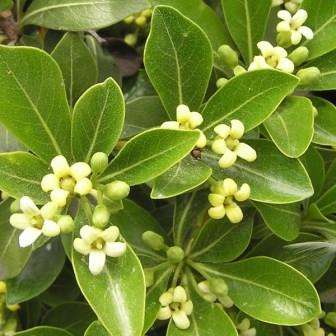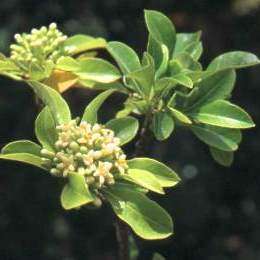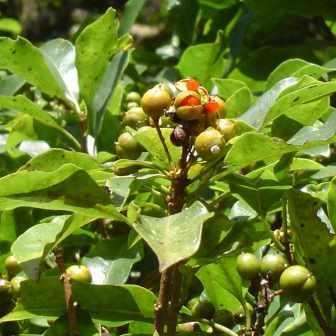





5 Pittosporum viridiflorum Seeds - Cheesewood - Indigenous Tree or Shrub - Combined Global Shipping
Check my rate
| Main centres: | 1-3 business days |
| Regional areas: | 3-4 business days |
| Remote areas: | 3-5 business days |






| Main centres: | 1-3 business days |
| Regional areas: | 3-4 business days |
| Remote areas: | 3-5 business days |

Pittosporum viridiflorum Seeds
Cheesewood; Kasuur

Pittosporum viridiflorum commonly known as Cheesewood in English and Kasuur in Afrikaans is an evergreen tree that was selected to be one of the Trees of the Year for 2002. Pittosporum viridiflorum varies in size from a shrub of about 4m in height to a large forest tree of up to 30m. The bark is pale brown to greyish with distinctive white dots. The leaves are usually wider above the middle, dark green and glossy. Small, greenish-white, sweetly fragrant flowers are produced in early summer (November to December). They are followed by small, yellow-brown seed capsules. This plant is very showy when the capsules split open to release numerous small, shiny, orange-red seeds, which are covered in a sticky, resinous exudate. This cheesewood is often confused with the white milkwood (Sideroxlon inerme). Pittosporum viridiflorum is widely distributed in the eastern half of South Africa, occurring from the Western Cape up into tropical Africa and beyond to Arabia and India. It grows over a wide range of altitudes and varies in form from one location to another. Pittosporum viridiflorum grows in tall forest and in scrub on the forest margin, kloofs and on stream banks. Many birds, including the red-eyed dove and several starlings eat the seeds. Goats and game (Kudu, Nyala, and Bushbuck) browse the leaves. The stem bark, which has a bitter taste and strong resinous or liquorice smell, is used medicinally. Decoctions or infusions are widely used to treat stomach complaints, abdominal pain and fever. It is said to ease pain and have a calming effect. Dried, powdered root or bark is sometimes added to beer as an aphrodisiac. The wood is reportedly little used - being soft and white, which m account for the common name - Cheesewood. However, Venter& Venter (1996) state that it is used for kitchen furniture and shelving.

